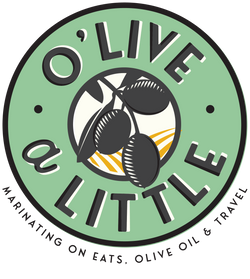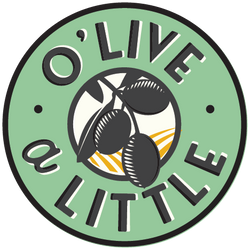
Would you believe that Parmesan cheese is an interest to the Italian Mafia? According to Wikipedia, between 2013 and 2015, over two thousand wheels of cheese were stolen from warehouses in northern and central Italy. A condiment so many of us take for granted as we sprinkle or grate it over salads, soups, pasta, pizza, and toasted bread is something being highjacked by organized crime gangs in Italy!
Legally labeled “Parmigiana-Reggiano”, authentic Parmesan is only allowed to be produced and called by its name in certain provinces within Italy. Since it is often called the “King of Cheeses”, Italian law takes duplication serious and does not consider imitation a form of flattery.
A Tour of Production
O’Live A Little Food & Gift Co. founders, Matt and Jennifer, enjoy touring the homeland and production facilities of as many cheeses, vinegar, and olive oils as possible to learn about the process and authenticity of their products. On one such trip, they explored Parma, Italy to learn more about Parmesan cheese. Let’s take a picture tour of the Consorzio di Tutela-approved facility they visited to learn how it is produced, stored, and shipped before reaching their stores in Canton, CT and South Windsor, CT.

The start of the morning mix for Parmigiano-Reggiano
The first step in the process is to combine the morning milking of unpasteurized cow’s milk with the last evening’s naturally skimmed milk. When you combine these two milkings, it produces a partial skim mixture that is pumped into copper-lined vats because of their ability to heat and cool quickly.

Copper vats are about 10 feet deep and are used due to their ability to heat up and cool down quickly
FUN FACT: Each vat is filled with 291 gallons of milk per vat, which makes 2 wheels (145 gallons per wheel).
Once the cheese is poured into the copper-lined vats, the starter whey is added and then the temperature is raised and lowered several times to complete the curdling process. The workers use muslin to remove the final, compacted curd and divide it into two pieces. While the final wheel will weight 84 pounds, at this stage it weighs about 100 pounds.

Workers will then siphon out the remaining whey to feed local pigs that are used to produce “Prosciutto di Parma”, a cured Parma ham.
Once the cheese is curdled and removed from the vat, it is poured into molds to create the “wheeled” look of authentic, specialty Parmesan cheese. A day or two later, the workers will remove the spring-belt from the mold and stamp the cheese to provide the authentic stamp with the Parmesan-Reggiano name and information about its production date. In another day or two, the imprint will remain in the cheese without the mold wrapped around it. The cheese is washed in a brine bath and transported to aging rooms where it will remain for 12 months. During this time the shelves and cheeses are washed and the cheese is turned every seven days.

Cheese from various stages of the production process sitting in the copper vats.
Once the cheese is curdled and removed from the vat, it is poured into molds to create the “wheeled” look of authentic, specialty Parmesan cheese. A day or two later, the workers will remove the spring-belt from the mold and stamp the cheese to provide the authentic stamp with the Parmesan-Reggiano name and information about its production date. In another day or two, the imprint will remain in the cheese without the mold wrapped around it. The cheese is washed in a brine bath and transported to aging rooms where it will remain for 12 months. During this time the shelves and cheeses are washed and the cheese is turned every seven days.

The final stamp labels the product for authenticity.
When the cheese ages to 12 months, it is inspected for quality to ensure each wheel meets the high standards required for specialty cheeses. The inspector, called a Master Grader, looks for cracks and voids that should not be within the wheel. Any wheels that don’t meet the standards will have lines either branded through the authenticity stamp or have the authenticity stamp removed from the rind so buyers will know the cheese they are purchasing doesn’t live up to the standards of top-quality Parmigiano-Reggiano cheese.
Once this process is complete, wheels will be moved to another aging room for a year to continue aging through the 24-month mark. The final cheese product will have a sharp, fruity, nutty taste that is very savory.

Matt and Jennifer standing in the aging room with 24-month aged cheese.
This tour shows us the production of authentic Parmigiano-Reggiano, which is important to note differs from the generic parmesan you buy from popular-food or generic companies in containers on your grocery store’s inner aisles.
(The information for this article came from Matt and Jennifer’s tour guide and was supplemented by information collected on Wikipedia. Please see the Wikipedia article for the history, other uses, and similar cheeses, if interested.)

